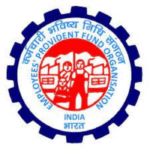The participation of Indian women in the workforce declined from 40 per cent in 2005 to less than 25 per cent in 2018. According to ‘The Power of Parity Report’ by McKinsey Global Institute, the contribution of women to India’s GDP now is 18 per cent — one of the lowest in the world.
India is the second fastest growing economy in the world and the collective goal of our government, policymakers, companies and people is to become an economic powerhouse producing a five trillion dollar economy by 2025. The McKinsey Report further states that we can add up to $770 billion—more than 18 per cent—to our GDP by 2025, simply by giving equal opportunities to women. This is indeed a huge opportunity to boost India’s GDP by increasing the participation of women in the workforce, raising the number of hours worked, and including them in higher-productivity sectors, such as IT services. India’s economy also has the second-largest potential in the Asia-Pacific (APAC) region for improving gender parity. More than 70 per cent of the potential GDP opportunity comes from increasing women’s participation in the labour force by 10 percentage points.
However, this requires us to bring an incremental 68 million women into the mainstream formal- sector workforce.
What keeps women from joining the workforce?
The reasons behind women falling out of India’s labour force are both economic and cultural.
Indian society has not been able to create labour-intensive manufacturing jobs that can provide large-scale employment opportunities to women. In addition to the significant economic benefits from higher participation of women in the workforce, women’s employment is usually linearly linked to their financial well-being and socio-political empowerment, improving their overall life quality. Researches demonstrate that working women have greater power and voice, while poor participation in workforce has negative consequences for their bargaining power within their households and society.
What is the solution?
The solution, doubtlessly, requires a systemic change in the way the role of women is perceived by society, and therefore, the economy. Huge investments in upskilling and educating women since birth, financial inclusion, encouraging women entrepreneurs, and strengthening legal provisions for safety and security of women, are initiatives that need to be driven by policymakers and the Government. More than anything else, this process should allow women equal access to employment opportunities, providing them the support system required for them to stay within the workforce.
An ILO Study March 2018, shows that women make up 42 per cent of new graduates, and almost 25 per cent of entry-level professionals. But, of these, only ten per cent reach senior-level management roles and only one per cent reach the CEO level (SCOPE ILO Study, March, 2018).
Women at Gi Group
Gi Group internally employs more than 5000 people globally. Of these, 72.5 per cent are women. In Gi Group’s India workforce, women constitute 50 per cent of the total workforce. If we take into consideration the percentage of women in managerial roles, Gi Group India has 60 per cent women in mid- and senior-leadership roles.
“At Gi Group, our mission is to provide work as a means for individuals to fulfill themselves. We are committed to providing people opportunities that allow them to experience a future that abides by principles of equality, as well as protection of personal dignity and safety against all forms of discrimination. Helping women find and sustain meaningful employment opportunities is, therefore, only a natural extension of our corporate mission and goals,” says Marcos Segador, country manager, Gi Staffing Services, India.
As a part of its services portfolio, Gi Group partners with 400+ corporate clients facilitating their talent acquisition and management goals both in temporary and permanent staffing. It actively works with employers in India to sensitise and address their diversity and inclusion agenda, and have in place a more gender-balanced employee base.
Swapna Reddy, who was placed by Gi Group to its client Coromandel Agro, says ”Gi Group gave me the opportunity to learn and upgrade my skills and career. I was given a very good team to work with and grow positively. Working until I was completely happy with what I’ve accomplished made me understand I absolutely was in the right place.” Although an agri-industry company is not a typical choice for women, Swapna quickly realised how rewarding the experience was, in terms of both personal growth and economic independence.
In addition to all standard benefits, Gi Group also has well-defined and employee-friendly policies, such as structured remote working options, to ensure quality work-life balance and career growth at the same time. These policies are not just specific to women employees, but can also be availed by male colleagues, creating a gender-neutral work environment that fosters a supportive atmosphere for all employees and helps face and fight outdated socio-cultural customs.
Since almost 40 per cent of the women in the corporate sector usually do not return to work after maternity leave or quit within six months of returning, Gi Group India is developing a programme to help them positively reintegrate at work. The goal is to ensure they find the right balance between personal and work life.
Vasudha Johri, who has recently completed 10 years at Gi Group India, sums it up eloquently — “Gi Group gave me a platform to grow in my career based entirely on my performance, value addition and integrity towards the organization, while giving me a safe and supportive working environment.”
Value our content... contribute towards our growth. Even a small contribution a month would be of great help for us.
Since eight years, we have been serving the industry through daily news and stories. Our content is free for all and we plan to keep it that way.
Support HRKatha. Pay Here (All it takes is a minute)




































